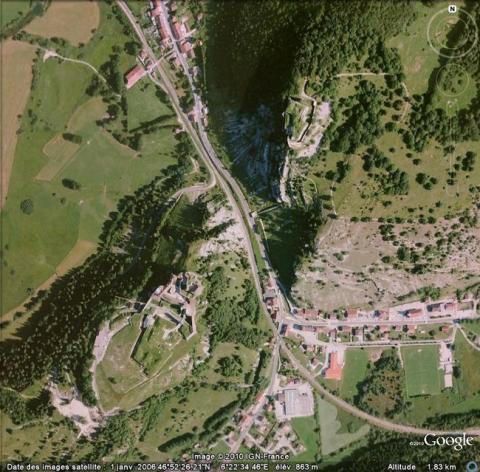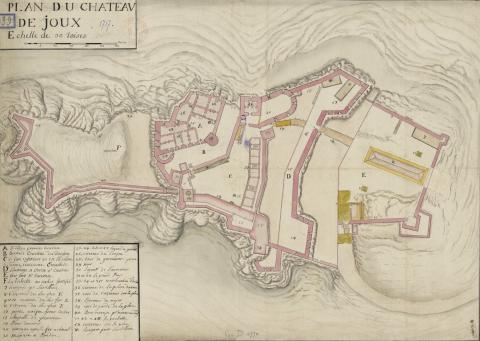Château de Joux
History and description
The château de Joux was constructed from the 10th century, as a fortress and the residence of the Sires of Joux. It occupied a hill dominating the gorge traversed by the Pontarlier road towards Switzerland. A century after the Joux line had disappeared; the Duke of Burgundy Philippe le Bon bought it in 1454. The castle was besieged in 1475 by the French under Louis XI, who returned it to the sovereigns of Berne. In the 16th century, it was renovated and modernised by the Swiss and the German sovereigns. A third urban wall (the two first were from the castle of the Middle Ages), was added in front of the former castle. This urban wall included multiple buildings and a hemispherical artillery tower.Besieged four times in the course of the 17th century and taken by the French in 1674 during the second conquest of Franche-Comté, the Château de Joux became French as of this time. Vauban focused on this area in 1690, following the War of the League of Augsbourg. He added the fourth urban wall, comprising a hornwork, flanked with two crenelated bastions for the artillery, had moats re-excavated, installed a drawbridge gate and wartime trophies, and finally also barracks. Stables and additional quarters were installed when the bastions were improved.
In 1733, a chapel surrounded by a cemetery was constructed in one of the bastions. In 1880, the castle was modernised once again with the addition of a new advanced work, known as the fifth protective wall. This included earth banks and artillery cademates. Captain Joffre, future Marshal of the First World War, coordinated the modifications. Two peripheral forts, the fort du Bas-Larmont and the fort Larmont-Supérieur, were added to neighbouring nearby hills in 1843-1851 and in 1879-1883 to complete the defences. The latter were subject to some modifications during the Between-two-wars. A bunker tunnel was constructed in the fort du Bas-Larmont.
Current state
The château de Joux still exists and is classed as a historical monument. It is open to visits. Multiple phases of construction restoration have been attempted. The fort du Bas-Larmont (renamed after fort du Malher) and the fort du Haut-Larmont are abandoned and not open to visitors.
Château de Joux
Château de Joux
46° 52' 19.6183" N, 6° 22' 26.2747" E

